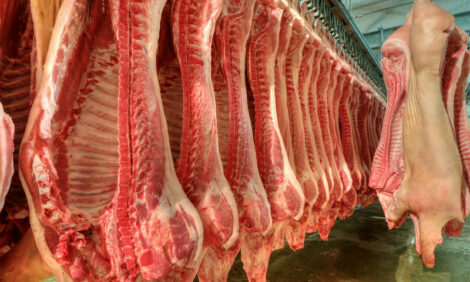The Volatility of China's Pork Industry
ANALYSIS - Growth of China's domestic pig meat industry is being held back by rising costs, disease outbreaks, animal waste disposal challenges and food safety concerns as well as more competitively priced imports, according to a new report from the USDA Economic Research Service. Senior editor, Jackie Linden, highlights the main points of the report.
With China’s emergence as a new source of potential demand for US pork exports, it is important for American farmers, business leaders and policy–makers to understand the volatile nature of the Chinese pork industry, according to a new report from the USDA Economic Research Service entitled China’s Volatile Pork Industry.
One of the key factors, says the report's authors, is the volatility of the Chinese market in terms of prices, inventories and pork output as the result of a number of market factors.
Policy interventions by the Chinese government have helped to consolidation in the domestic pork industry but they have not achieved market stabilisation, they say.
The ERS report continues that when pork prices are high locally, China imports more pork. And pork prices have risen along with production costs, disease outbreaks, environmental threats and food safety concerns, all of which have held back the expansion of China's own pig meat industry recently.
Interestingly, the average hog price in China has been above that in the US (in US-dollar terms) since 2007, and last year, the prices of all pig meat types, both muscle and offals, were significantly higher for Chinese product than imported products from the US.
Like other countries, Chinese pig producers have been hit by higher production costs in recent years, a situation exacerbated by the movement of the population to the towns and cities. The shortage of labour in the countryside has meant that many small backyard farms have given up pig production and the larger commercial units that have replaced them tend to use more expensive maize and compound feeds, rather than by-products and wastes, and labour costs have also risen.
Diseases have also impacted the Chinese pig meat market, says the report. It cites outbreaks of ‘blue ear’ disease (PRRS), foot-and-mouth disease (FMD), classical swine fever, pneumonia, Streptococcus suis, circovirus, parasites and erysipelas as common in China’s pig industry. News reports indicate that large losses attributed to disease periodically restrict the supply of pork, contributing to price surge although the effects are hard to quantify with precision.
Producing large quantities of pork in China entails additional costs, such as the environmental impacts of pig manure waste and food safety incidents, continues the report.
The dense population of pigs in some provinces strains the capacity of the land to supply feed for the animals and to absorb their waste. Chinese officials have begun promoting ‘ecological’ modes of production that use pig waste to feed fish or fertilise crops and use bacteria to break down the manure.
Food safety is also a major concern for Chinese consumers of pork. The media there have frequently reported on the pig industry's use of illegal feed additives, the slaughter of sick hogs, the pumping of potentially contaminated water into hogs prior to slaughter and the contamination of feed with heavy metals. Furthermore, Chinese consumers are becoming more wary of pork products that contain food additives.
Food safety concerns are contributing to changes in purchasing patterns that may make consumers more receptive to imported pork, continues the report. Traditionally, Chinese consumers preferred to purchase freshly slaughtered pork from small wet market vendors but food safety concerns have encouraged them to shift purchases to supermarkets, where pork is believed to be more sanitary and free of illegal feed additives.
The ERS report concludes with a warning to its target US audience that volatility in China's domestic market may result in similar volatility in export sales but the warning also applies to other countries eyeing China as a potential export market for pig meat.
China’s Volatile Pork Industry was written by Fred Gale and Daniel Marti, agricultural economists with USDA's Economic Research Service and Dinghuan Hu, a professor with the Institute of Agricultural Economics and Development at the Chinese Academy of Agricultural Sciences.
Further Reading
 | - |
You can view our first article on the ERS report by clicking here.
|












